Everything you need to know about a guitar's action: what it is and how to adjust it on your electric guitar
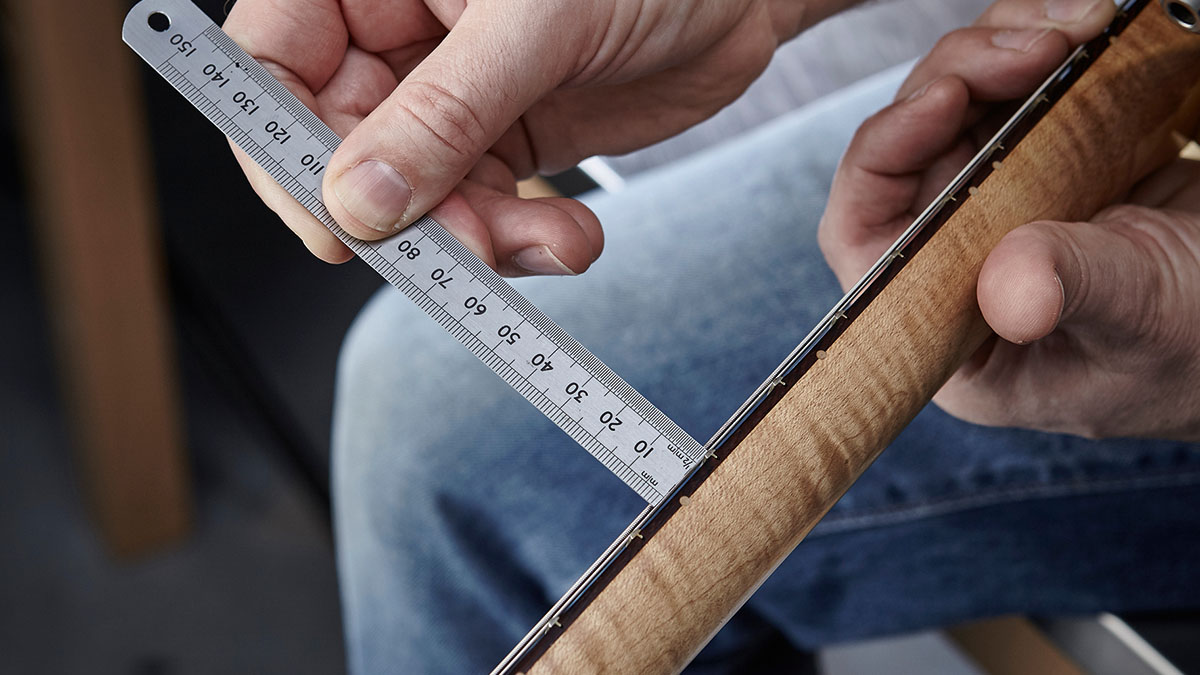
Starting out as a guitar player, this writer quickly became aware of the term ‘action’. More experienced guitar-playing friends would blithely declare that one guitar had ‘great action’ while another one had ‘poor action’.
Or even more broadly, that Gibsons had better action than Fenders. It didn’t make much sense at the time – and decades later it still doesn’t. Back then, ‘great action’ invariably meant low-set strings, which was associated with easy playability.
But optimum string height and playability are really down to player preference. String benders often like a guitar that feels slinky and facilitates finger vibrato, while others prefer a bit of resistance and fight.
Two guitars with identical string-height settings can still be very different, with one feeling loose and freed up while the other is stiffer. Action and playability are interrelated, but neither can be assessed simply by measuring the gaps between strings and the top of the 12th fret. It really involves a combination of different factors that contribute to the overall feel and tone and allow you to play to the best of your ability.
Clearly, we all have different playing styles and use our guitars for different applications. You wouldn’t expect your acoustic to play like a Les Paul any more than you’d expect a 1960s-style Stratocaster to play like an Ibanez JEM.
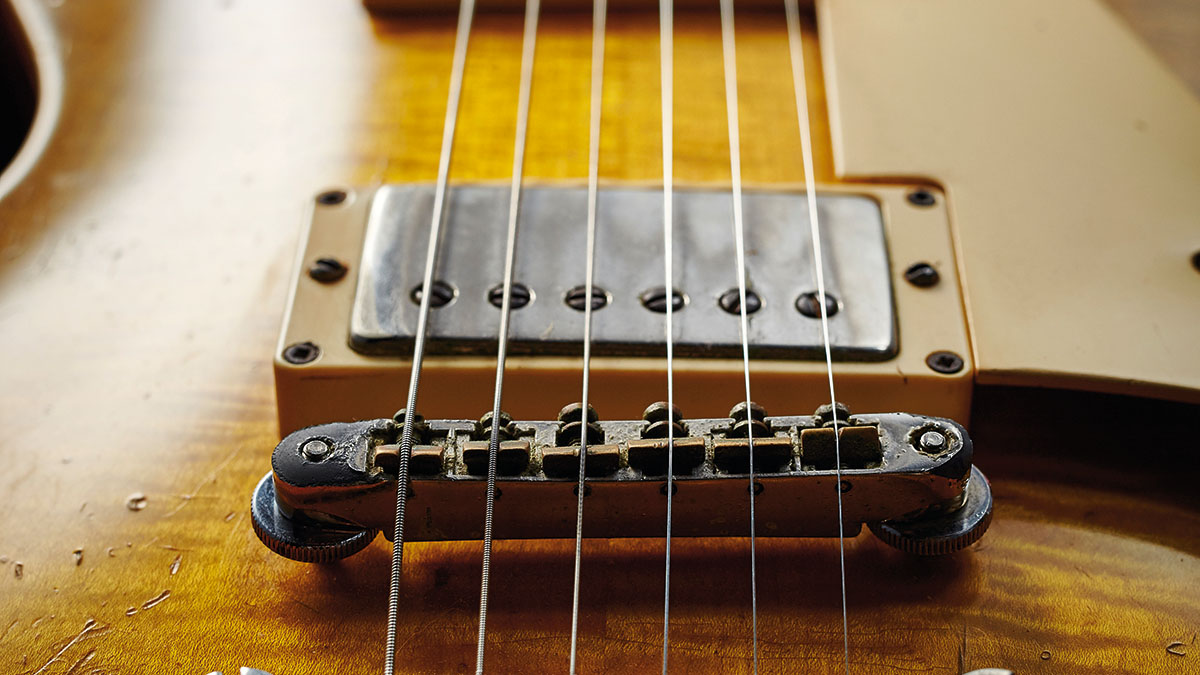
Taking a holistic overview, then, we think that action is really about general playability, rather than simply string height, and the terms can be used interchangeably.
So let’s identify the areas where tweaks can be made, discuss some of the structural issues that limit scope for adjustment, and consider some alternative setup ideas.
Get The Pick Newsletter
All the latest guitar news, interviews, lessons, reviews, deals and more, direct to your inbox!
Light Relief
There are three main areas that can be adjusted to change string height: the bridge, nut slots, and neck relief. Although plenty of us might feel inclined to head straight to the bridge, the starting point should actually be neck relief.
If you visualize the arc of a vibrating string, the displacement is greatest halfway along the length and it’s lowest near the bridge and nut. To ring cleanly, the string needs sufficient space to prevent contact with the frets – and that’s why the truss rod is usually slackened to allow the neck a very slight up-bow under string tension. If the neck is flat or it’s pulled into a back-bow due to excessive truss rod tension, the strings will buzz and rattle when they’re adjusted for a medium or low action.
If the strings seem low and are buzzing around the lower frets, the neck probably needs more relief
A gap of around 0.02 inches is fairly typical, but you can judge it by using your eyes, ears, or feeler gauges. If the strings seem low and are buzzing around the lower frets, the neck probably needs more relief. If it plays cleanly but the strings feel high and you can see a sizable gap at the 7th fret, there’s probably too much relief. As for fret buzz, some players are more accepting than others – especially when it’s inaudible through an amp.
Bear in mind that necks do move around in response to atmospheric conditions, so it’s important to assess and optimize the relief before you start adjusting bridge and saddle heights. Sometimes it may seem like a guitar needs a setup, when it only needs a truss rod tweak.
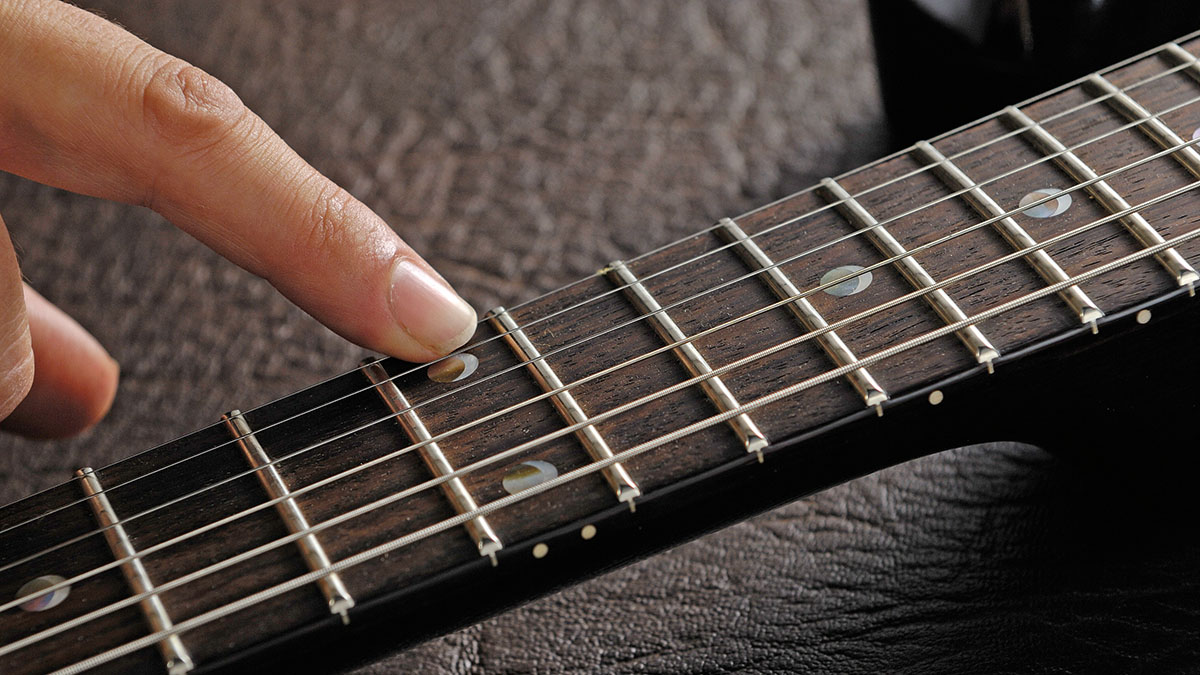
Rod tension can also affect the way a guitar feels and sounds. A stiffer neck can make a guitar ring and sustain a little better, and you may detect changes in the way strings feel to bend. Either way, getting the neck set from the start means you won’t end up having to go back and forth with the nut and bridge adjustments.
Bridge
So long as you have the correct tools, adjusting individual saddles is easy enough. Most Gibson-style bridges can be lifted or lowered using thumbwheels or a large flat-head screwdriver. The difference here is that the string radius is pretty much fixed unless you’re able to finesse saddle slots using nut files.
With most Fender-style bridges you can adjust the string radius. Radius gauge sets are quite cheap to buy, or you can access free ones to print off (check out pickguardian.com, where you can download a free pdf).
Once you’ve adjusted the height of the outside strings to eliminate any buzzing and choke out, try setting the radius of the other strings a bit flatter than the fretboard radius for easier playing. For instance, a 9.5-inch bridge radius can feel good with a 7.5‑inch fretboard.
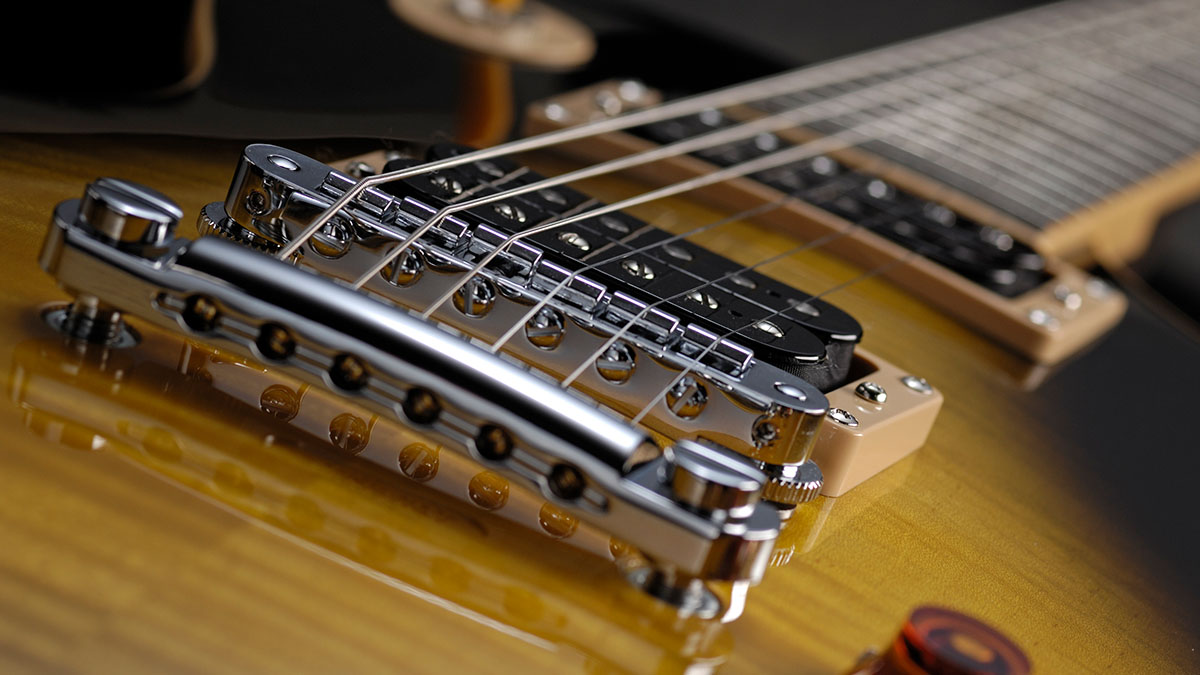
Nut
It’s easy to disregard the impact that nut slots can have on a guitar’s overall playability – and minute changes can have a profound effect. Try placing a capo at the 1st fret to test if your guitar feels easier to play and sounds more in tune. If it does, the nut might need some attention.
Remove the capo, fret a string at the 1st fret and tap that string directly above the 2nd fret to assess the clearance. Then do the same at the 1st fret with the string open. Ideally, the gap at the 1st fret should be nearly identical to the gap at the 2nd fret, and, of course, you’ll need to check the gaps for each of the six strings.
With wound strings, it’s usually preferable for the 1st-fret gap to be slightly greater to prevent string buzz, especially with the low E. On the other hand, for plain strings, the clearance at the 1st and 2nd frets should be about the same.
Nut replacement and slot cutting require skill and specialist nut files, but a capo, a keen eye, or feeler gauges are all you need to assess the slots and decide if you need to take the guitar to a tech
With electrics and acoustics, you may notice an improvement in intonation, especially with that all too tricky open D chord. But the most remarkable effect is the way that accurately lowering nut slots can make strings feel looser and easier to bend. It somehow makes guitars feel more ‘played in’. But when slots are too low, open strings can buzz against the 1st fret.
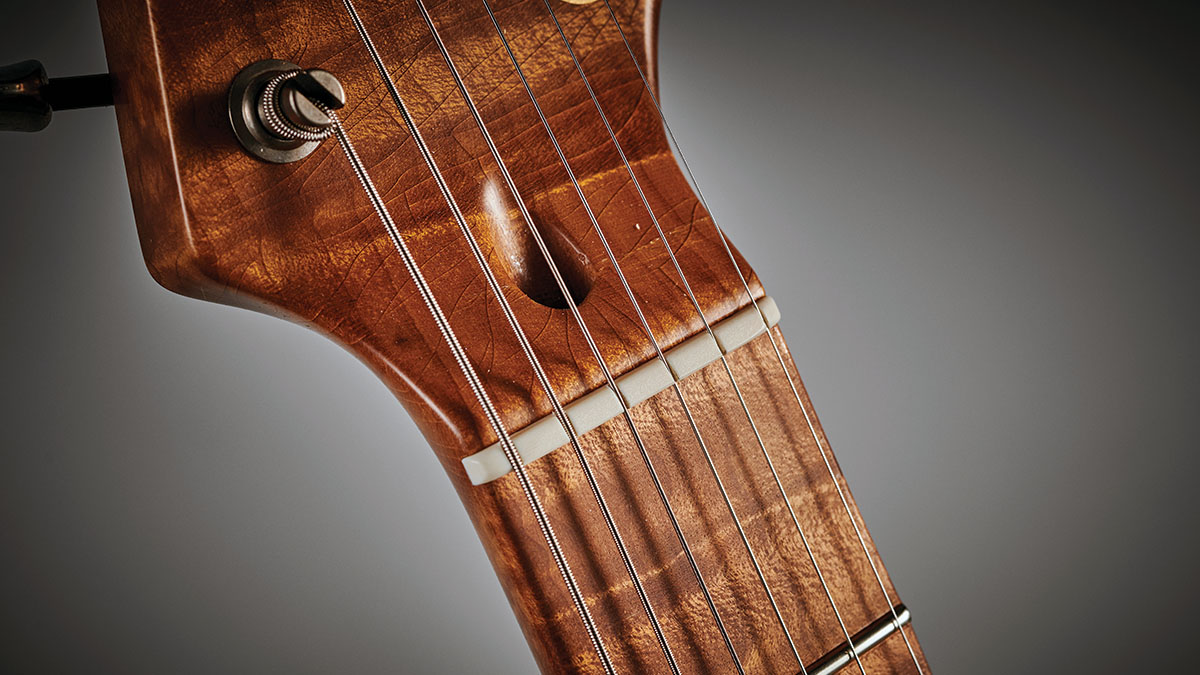
Sometimes, truss rods are loosened and bridges raised to minimize the issue, but the action is compromised in the process and the only solution is to shim or swap the nut. Nut replacement and slot cutting require skill and specialist nut files, but a capo, a keen eye, or feeler gauges are all you need to assess the slots and decide if you need to take the guitar to a tech.
Curve Ball
Sometimes we have to be pragmatic about action because the fretboard radius can limit how low you can go. If you imagine a perfectly flat fretboard, the clearance between the fretted string and the following fret would remain the same however far you bend it.
When the fretboard is curved, however, the gap between the string and the following fret narrows as you bend it. If the string height is set too low, then it will choke out, and that limits how far you can bend the string.
The tighter the fretboard radius, the higher the string height needs to be if you want to bend a tone (or more) cleanly. Many modern Fender guitars have a 9.5‑inch radius, rather than 7.25-inch, because it facilitates the lower action that most modern players prefer.
Fret Not
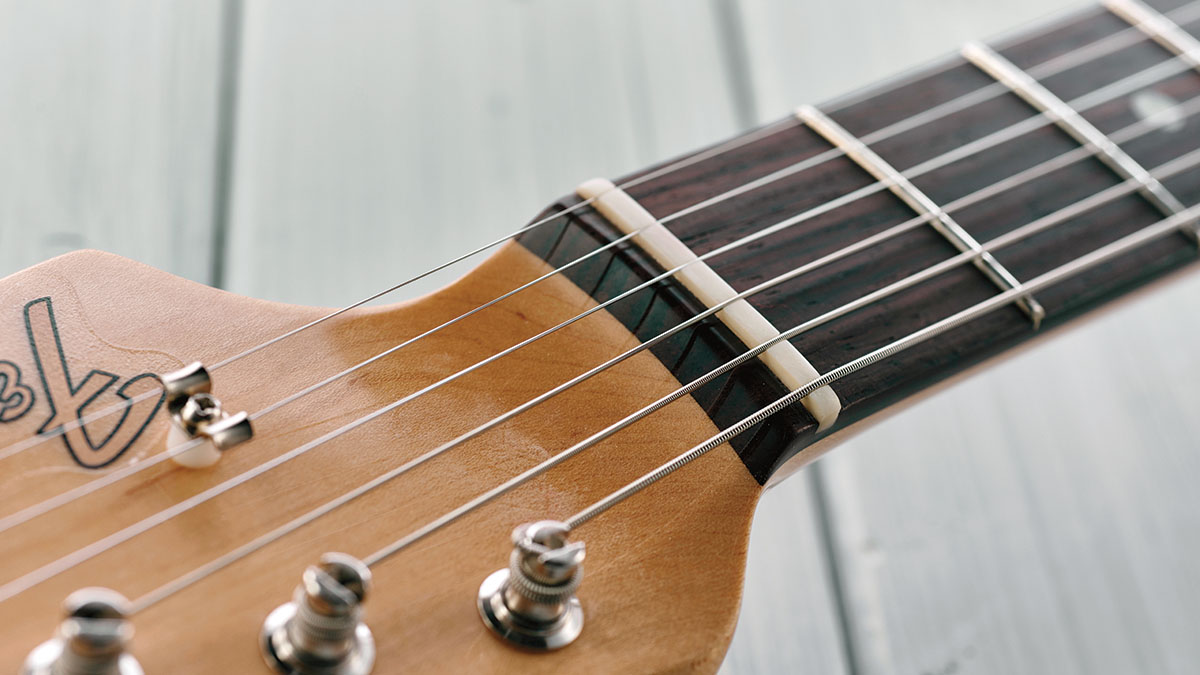
One workaround for the fretboard radius issue is the ‘bender’s fret dress’. When taller frets are installed, the upper frets can be levelled to a flatter radius. The result is effectively the same as a compound-radius neck but with metal being removed rather than wood. Talk to your luthier about this if you want lower action without having to alter a vintage-style neck.
If you’re not a string bender and mostly stick to chords, low frets may be preferable. This is why Les Paul specified ultra-low frets for the Les Paul Custom. But for most modern players, low and worn-out frets can compromise setup and playability.
Regardless of whether you like low or high action, it’s much harder to bend strings when frets are very low. It may seem counterintuitive, but raising the action and trying lighter strings might actually help in this instance.
High Time
It’s interesting to look at artists’ setups and evaluate the choices they’ve made on their own instruments. Having played several of Aynsley Lister’s Stratocasters, we can report that his preferred setup is far from conventional. Aynsley favors jumbo frets, fairly high action and 0.011-gauge strings.

Admittedly, he tunes down a semitone, but his guitars are actually quite comfortable and easy to play. Bends feel very fluid and controllable, and notes ring out clearly, but the big frets are crucial to the equation.
Chris Buck also prefers his action slightly higher than usual and opts for 10.5s that are tuned to concert pitch. Joe Bonamassa uses 0.011-gauge strings tuned to concert pitch on his Les Pauls, but he favors wrapping over the top of the tailpiece to lower tension. In contrast, Billy Gibbons top-wraps 0.007-gauge strings and nobody criticizes his tone!
When trying to optimize a guitar’s playability, don’t be too blinkered about string gauges. Many guitarists unthinkingly put the same gauge strings on every guitar, irrespective of scale length or action. If 10s feel comfortable to you with a 629mm (24.75-inch) scale length and a 305mm (12-inch) radius, you might prefer 9.5s or even nines with a 648mm (25.5-inch) scale length and a 184mm (7.25-inch) radius.
Action Stations
Hopefully, we’ve dispelled the idea that action is something immutable, because all guitars can be adjusted to optimize playability. Don’t get too hung up on measurements and string gauges, accept there will always be limitations and try to enjoy your guitars for what they are. And if you’ve given a guitar a fair shot and it still doesn’t feel right, just sell it on so someone else can enjoy it and buy one you prefer.
Huw started out in recording studios, working as a sound engineer and producer for David Bowie, Primal Scream, Ian Dury, Fad Gadget, My Bloody Valentine, Cardinal Black and many others. His book, Recording Guitar & Bass, was published in 2002 and a freelance career in journalism soon followed. He has written reviews, interviews, workshop and technical articles for Guitarist, Guitar Magazine, Guitar Player, Acoustic Magazine, Guitar Buyer and Music Tech. He has also contributed to several books, including The Tube Amp Book by Aspen Pittman. Huw builds and maintains guitars and amplifiers for clients, and specializes in vintage restoration. He provides consultancy services for equipment manufacturers and can, occasionally, be lured back into the studio.
"A traditionally spec'd, workhorse machine that sounds like a Les Paul should while offering some limited-edition aesthetics": Gibson Les Paul 60s Double Trouble review
“It’s the guitar I’ve dreamed of making for years”: Jackson and Bring Me the Horizon’s Lee Malia champion the rise of the metal offset with new signature Surfcaster











